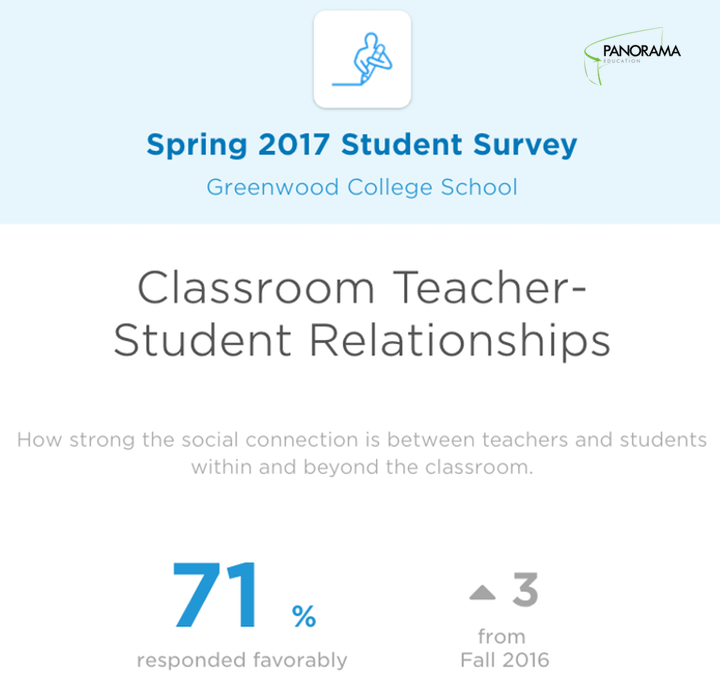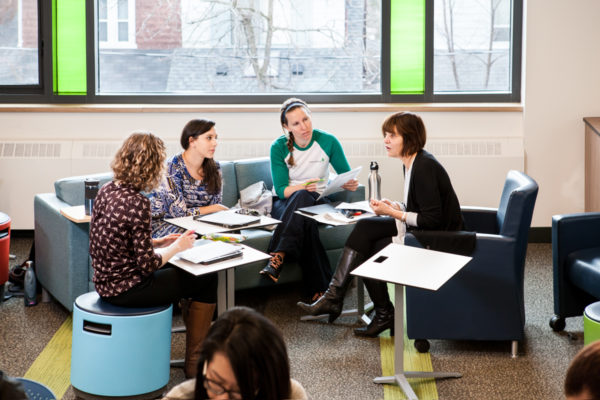Greenwood College School is a not-for-profit, independent, grade 7 to 12 school with about 450 students and about 60 teachers. We focus not only on academic achievement, but also on each student’s character development through connecting to their varied interests, both inside and outside the classroom. At Greenwood, we emphasize community service, extracurricular activities, outdoor education, the arts, and athletics. We want our students to venture out in the real world, experiencing life as much as possible.
Schools looking to personalize learning generally aim to increase interactions between the student and teacher. To achieve this goal, the most straightforward approach would be to have fewer students per teacher; the idea is that the teacher will have more time to devote to each individual student’s growth.
Did you know that it’s Digital Citizenship Week? Click here to learn more!
At Greenwood College School, we had an alternate idea. What if we maintain the student-teacher ratio by adding a second teacher to a larger classroom space to promote various groupings and engagement between students and teachers? Instead of shrinking the traditional classroom, we believed that combining classes together in larger, flexible spaces would allow students more opportunities to find their own learning path.
Our essential concern inside the walls of the school is to create the space our students need to direct their own learning and to work at their own pace. For instance, last year we combined 10th- and 11th-grade math in the same room, each with their own teacher. This allowed for more advanced students to excel faster and afforded more personalized support for all students. Having more students and teachers in a room created a more dynamic space, with more opportunities for student groupings.
Clear Data Earns Buy-in from Parents
When we started moving toward this new, flexible classroom structure, we knew it departed from the norm and that data would help us instill the belief that this approach would be as effective as a small class. In the past, we used an in-house student survey, but we ran into problems, since it resulted in mostly anecdotal observations and we couldn’t compare the findings with those from other educational institutions to show how we were evolving. To work with reliable data, we needed a body of research that would compare our data to external sources to see if it could validate our approach and deepen the buy-in within our community.
(Next page: Student surveys and inspiring teachers)
We started using student surveys from Panorama Education to assess five categories that would show us whether or not this new approach was working: Classroom Engagement, Classroom Rigor, Learning Strategies, Pedagogical Effectiveness, and Teacher-Student Relationships.
The data we gathered from students supported our theory that two teachers teaching two classes is just as effective as one teacher teaching a single class. For instance, one of the areas we wanted to maintain when moving to a co-teaching model was the strong teacher-student relationships that are so critical to our students’ experience at school.
What were the results?
Between the first survey in the fall and the second survey in the spring, our students’ favorable perceptions of their relationships with teachers grew by three percentage points. The adjustment to the co-teaching model and larger rooms took time, but with support and approaching things differently, teachers also were able to excel in Pedagogical Effectiveness.

Using big classrooms to personalize learning is counter-intuitive, but sharing this data has been helpful in validating our approach to our community and shaping the school’s unique approach in learning.
Inspiring Teachers to Improve
The Panorama survey data sparked reflection among our teachers and shook up their preconceived notions of what student engagement means in the classroom. My colleagues Heather Thomas, vice principal, Academic Learning, and Mary Gauthier, the executive director of the Greenwood Centre for Teaching and Learning, worked with teachers during one-on-one conferences in which they talked about what worked well according to the data, and also came up with actionable strategies for improvement.
Heather and Mary had each teacher highlight three things they were most proud of, three things they found surprising, and three things they would like to improve on. As these sessions took place throughout the year, we saw improvements in the areas teachers were working on. Approaching the survey data in this way showed us as a community that we are on the journey toward improvement together, and that together we are indeed able to move the needle.
Moving forward, this data collection through student surveys will help us to do even more to empower our students to take charge of their own learning in ways that will directly benefit them as individuals.
So far, we have tested the effectiveness of combining two grade levels of the same subject in a single class, as well as the same grade in a dual-track class. We found in both cases these approaches work for our students.
In the future, we hope to experiment with mixing classes of related subjects, creating an interdisciplinary environment. Another new theme we will be working on in the coming year is being sensitive to gender identity and related issues. We want to take a closer look at how gender relationships impact learning and relationships between students and teachers.
We’ll also be looking into different personality types—such as introverted versus extroverted students—to see how we can better serve our students’ wide range of social and emotional needs. Our mission through all of this will always be to follow our students’ natural interests and abilities to help them succeed.
- 4 ways to encourage play in education - April 25, 2024
- It’s time to pay student teachers - April 25, 2024
- The evolving requirements of a K-12 school network - April 24, 2024

